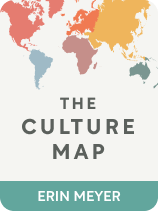

This article is an excerpt from the Shortform book guide to "The Culture Map" by Erin Meyer. Shortform has the world's best summaries and analyses of books you should be reading.
Like this article? Sign up for a free trial here .
How do people of different cultures perceive time? What is the difference between linear time and flexible time perception?
Understanding how other cultures perceive time is crucial for maintaining beneficial business relationships. Otherwise, you might be furious that you’ve been kept waiting—then become even angrier when your partner arrives and not only doesn’t apologize but is also confused as to why you’re so upset. In her book The Culture Map, Erin Meyer classifies the perception of time in different cultures into two broad categories: linear-time (aka monochronic) and flexible-time (aka polychronic).
In this article, we’ll explore the differences in time perception across cultures and how they develop.
Monochronic vs. Polychronic Cultures
Time in different cultures is perceived either monochronically or polychronically.
In monochronic cultures, time is a method of organizing life. As such, monochronic cultures value a fixed, linear schedule. Time is a consumable commodity, which is why expressions such as “wasting time” or “saving time” exist. These cultures focus on one thing at a time. This is true in business as well as in daily life.
In contrast, polychronic cultures have a flexible approach to time. Polychronic cultures work on several things at once, both in business and in daily life.
How Monochronic Cultures Develop
Meyer suggests that one factor that contributes to the development of monochronic cultures is industrialization. During the Industrial Revolution, people were newly required to arrive at an exact time to a specific location. This is because they started working in factories, and the machines were turned on at specific times. If you were late, you cost the company money.
Meyer argues that Germany is a perfect example of the Industrial Revolution’s effects, since Germany was one of the most monochronic cultures in the world and also was one of the first places to become heavily industrialized.
(Shortform note: Meyer associates the Industrial Revolution with Germany, but most people associate it with England, where it began. Hall, who both originated the concept of monochronic time and first linked to industrialization, is no exception. In Understanding Cultural Differences: Germans, French, and Americans, he and co-author Mildred Reed Hall argued that monochronic cultures began in England when the Industrial Revolution required factory workers to arrive at a specific place at a specific time.)
Meyer also notes a correlation between countries with predictable systems and monochronic cultures, although she stops short of arguing that countries with predictable systems are necessarily industrialized. In many countries, holidays are pre-scheduled and built into the calendar. The government runs reliably. Natural disasters are unlikely to drastically inhibit your ability to go about your daily business.
If everything around you runs on time, but you’re always late, you become a financial liability. So, Meyer suggests, the more predictable a culture is, the more likely it is also monochronic.
(Shortform note: This predictability can cause problems when unforeseen circumstances do occur. In 2021, many Japanese holidays were rescheduled for the rescheduled 2020 Tokyo Summer Olympics. However, pre-printed calendars mostly reflected the original 2021 holiday dates, resulting in confusion, loss of profit, and loss of productivity as people took off work when they weren’t supposed to.)
How Polychronic Cultures Develop
Meyer suggests that one reason cultures become polychronic is because their countries are unpredictable.
Meyer notes that many developing countries are unpredictable. But she stops short of arguing that all polychronic cultures are necessarily in developing countries.
In some countries, governments are unreliable. Holidays are determined not by the calendar, but by religious leaders. Annual natural disasters shut down large aspects of your business.
In such an environment, a company’s financial success has little to do with how efficiently it runs. Rather, it depends on two factors.
The first is adaptability: successful companies and managers are able to take environmental changes in stride and adjust how they work.
The second is the quality of their relationships: Successful companies and managers are able to keep their employees loyal in times of hardship.
Prioritizing time in these environments would be counterintuitive at best and harmful at worst. Strictly adhering to a schedule might hinder a company’s ability to adjust to various situations. Docking a worker’s pay for arriving one minute late (a common practice in many monochronic cultures) could anger the worker and cause them to desert the company far more easily.
So when relationships and adaptability take priority, schedules become less important and thus more flexible.
As evidence, Meyer notes that almost all personal trust cultures are also polychronic.

———End of Preview———
Like what you just read? Read the rest of the world's best book summary and analysis of Erin Meyer's "The Culture Map" at Shortform .
Here's what you'll find in our full The Culture Map summary :
- The eight axes you can use as a framework to analyze cultural differences
- How to better relate to those of another culture to accomplish business goals
- How the Vikings have more gender equality than we see today





